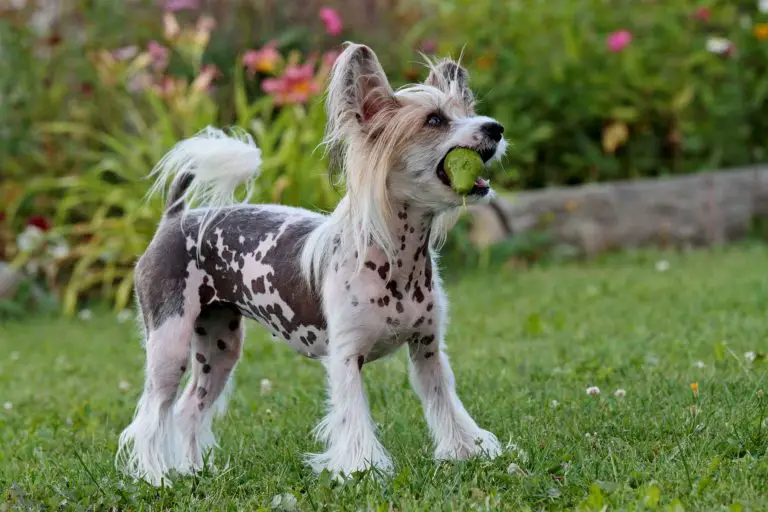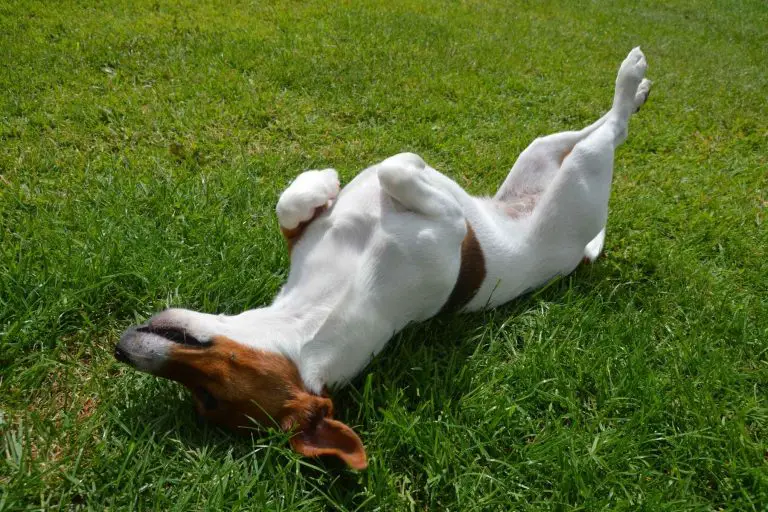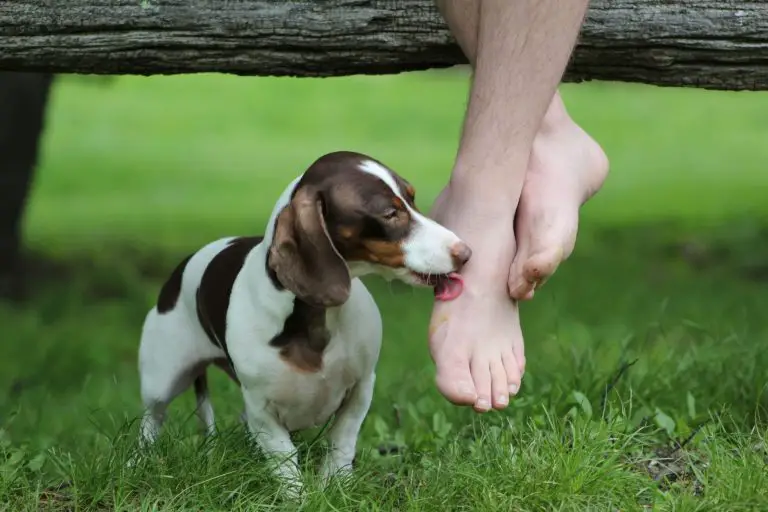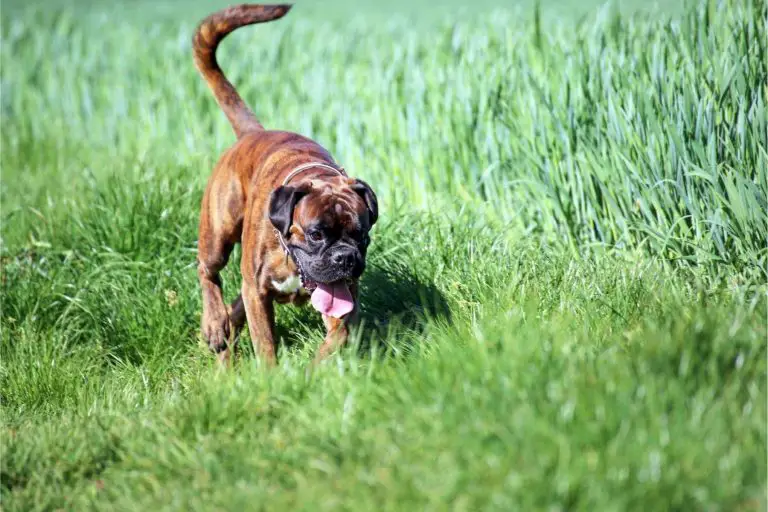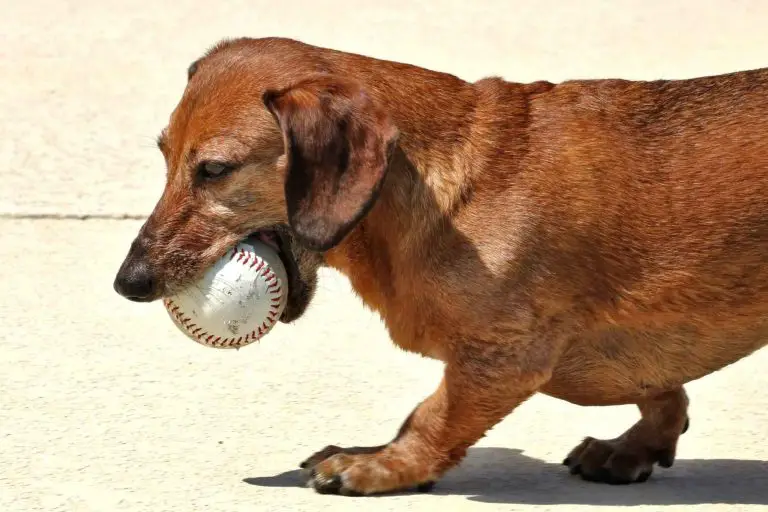Why Do Dogs Spin In Circles When Excited?
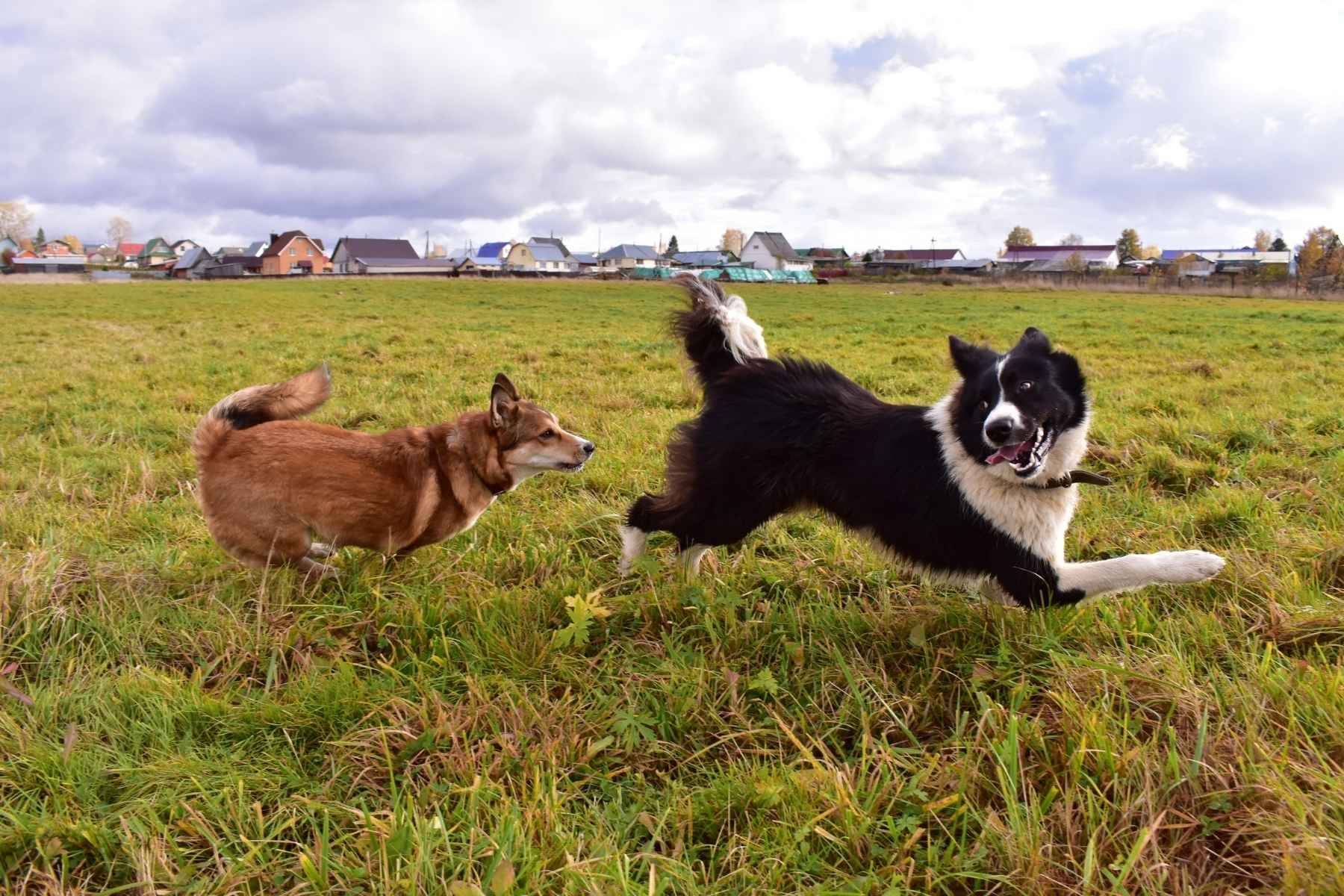
If you’ve ever seen your dog playing and giddy, you may have noticed it spinning in circles. This behavior looks amusing and somewhat silly, and it might leave you wondering why dogs do it.
Dogs usually spin in circles when they are excited because they want to demonstrate their excitement in a very visible way. They are eager to show you just how pleased they are, and they do this by burning off some energy, without moving to another room or area.
There are quite a few reasons dogs spin in circles when excited, so let’s explore a few of the top reasons and get to grips with why a dog is likely to do this. This will help you better understand this sort of behavior.
Why Is My Dog Acting this Way?
Dogs spin in circles when they are excited because they want to show you just how pleased they are by something.
Instead of running from room to room to express themselves, they choose to run around in circles, burning off the energy that results from the excitement.
Dogs may circle to show you that:
- They are delighted by something
- They are full of energy that they need to burn off
- They want to do many things at once and can’t settle on one
- They want you to know that they are excited
- They can’t keep still because their emotions are too much for them
Spinning in circles is common among younger dogs rather than older ones, but it can occur in any age group and is often connected with a specific event.
You might see your dog spinning when you have arrived home after being out, when you fetch its leash or otherwise indicate that a walk is imminent, when treats are on offer, or when it sees or hears something that brings it joy.
Circling like this is very common in dogs and may sometimes occur without any obvious prompt simply because the dog is excited.
You might even see your dog doing this in the middle of the night, especially if it is a young dog, even if there is no apparent trigger that might have set off the movement.
You may also see your dog spinning early in the morning when it has just had plenty of sleep and is looking forward to breakfast and playtime. It may have a lot of energy at this point, which can prompt spinning to show its excitement and deal with the excess energy.
What Triggers Excited Spinning?
Many different things can trigger this behavior in your dog, and it will vary significantly from dog to dog. Some are excited by toys, others by food, most by companionship, and many by open spaces and the prospect of playtime.
You may see your dog spinning in circles when you take it to a wide-open space or introduce it to a new toy or a playmate.
Dogs are more likely to spin when they haven’t seen someone for a while because they get even more excited than usual – and this can apply to both humans and canine friends.
You might also see your dog spinning when anticipating a good meal, after a bath, or even in response to specific sounds associated with something positive.
The more energy your dog has to spare, the more likely you will see it spinning in circles. Tired dogs rarely do this as they don’t have the energy for it.
Is Spinning Also Known As Zoomies?
Some people refer to this excited circling as “zoomies.” It even has a scientific term: Frenetic Random Activity Periods.
These can occur even without being triggered, but they are usually in response to something. However, it isn’t unheard of for people to wake up in the middle of the night and find their dog has the zoomies.
Your dog will usually settle down when it has spent a few minutes racing in frantic circles and should soon go back to sleep. However, this can be disruptive, and some pet owners find it annoying. Your dog will likely stop doing this as it gets older.
Is Spinning A Good Thing?
Spinning can indicate many different things about a dog, and sometimes it can be a negative, but it’s usually fine for a dog to be spinning when it is excited by something.
Spinning for other reasons could cause concern and might prompt you to take the dog to the vet. Excited spinning can also sometimes indicate that there is an issue.
If your dog does a lot of circling at night, for example, this could suggest that it is not getting enough exercise and is trying to release some pent-up energy to settle down and sleep.
Occasionally spinning in circles before bed is unlikely to be a problem, but consistent spinning and restless behavior suggests your dog needs more walks or playtime.
Spinning can also show a lack of control and an inability to deal correctly with emotions. For example, if your dog gets so excited that it bumps into things or people, you may wish to find other outlets for its energy.
Similarly, if spinning also leads to excited nipping or growling, giving your dog more exercise is important.
On the whole, spinning isn’t a problem and is just a natural way your dog expresses that it is happy about something.
Keep an eye on it and step in with positive outlets if your dog seems to get over-excited and out of control.
Should I Try To Reduce Spinning?
If your dog is spinning a lot, you might want to redirect its excitement when something happens to help it calm down. This is particularly important in crowded spaces and areas where spinning might be unsafe for your dog or others.
In general, however, there’s no reason to curb a bit of excited circling, as it will not hurt your dog and allow it to express its happiness. However, don’t join in, as this can heighten the excitement and work your dog up into a frenzy. Let it get its emotions under control and then continue as normal.
If you do want to try to reduce spinning, you may find that the below activities help:
- Obedience training
- Agility training
- More exercise
- Regular, scheduled walks
- Plenty of toys to engage your dog’s mind
- Playtime with other dogs
Tiring your dog out can be an excellent way to encourage less spinning. Your dog may be just as happy but won’t have as much burning energy that it needs to find a way to release. The more you play with your dog, the less it is likely to get giddy and out of control.
Do Elderly Dogs Spin In Circles When Excited?
Spinning is much more closely associated with young dogs and puppies because they have more energy to burn. Still, you may occasionally see a middle-aged or elderly dog spinning with excitement.
It usually takes a more significant event to trigger excited spinning in an older dog.
For example, if you have been away on vacation, you may see the dog spinning in circles with delight when you return, while simply the mention of a walk may no longer trigger this behavior.
Do Dogs Run Back And Forth Instead Of Spinning?
If you are in a wide-open space, you may see your dog running back and forth rather than spinning in circles. This carries the same message: I am excited, I have a lot of energy to burn and cannot keep still, and I want to demonstrate my excitement to you.
The reason that the behavior sometimes changes is that in an open space, there is room for the dog to expend more energy by launching itself away from you, but it then runs back because it is engaged with you and whatever has triggered the excitement. It isn’t chasing something else or running off to play.
It is letting out energy in just the same way it would do in a confined space, so effectively, it is still spinning in a circle – just a significantly bigger circle. The behavior means the same thing, regardless of how it appears.
Your dog may even run for a long distance and charge back to you, depending on how focused it is on you and the trigger for the excitement. Most dogs, however, will stay nearby because they don’t want to take their eyes off whatever has triggered them.
Conclusion
Dogs spin in circles when excited for a whole range of reasons, but their predominant goal is to let out some of the energy that the excitement has caused.
This behavior is more common in young dogs rather than in old ones, but you will see it in most canines when their excitement levels get high enough.


